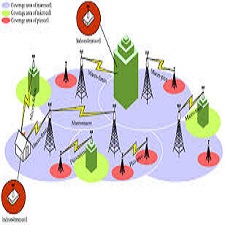توضیحات
ABSTRACT
In recent years market demands have shifted towards customized products. As a result many manufacturing companies face an increasing variety of their product range. As it is not profitable to install new assembly lines for each product, assembly lines have to be able to handle different products in batch size one. In literature these lines are called mixed-model lines. They follow the logical principal of flow production but are capable of producing different products while needing minimal modification of assembly processes at the workstations. While mixed-model lines help manufacturing companies handling product differences profitably, they result in a number of challenges for the production process. One major challenge is related to the varying assembly times at a single workstation due to different products. Actions have to be taken to cope with assembly time that is over cycle time, in order to avoid stops in a flow production. For economical reasons manufacturing companies have to be able to work at a high workload utilization on average. Therefore it is necessary to have a detailed look at the workstations’ situation regarding production time variety. To address this, an analytical framework for assembly lines, based on a mixed-model line principle, is given to identify workstations that face high complexity regarding production time variety. This analytical framework contains several aspects focusing on production time variety as drifting probability, utilization and statistical dispersion. By using this framework, companies can apply their actions and line balancing more precisely to the situation at a workstation. Thus, manufacturing companies are able to handle complexity effectively and to reach a high workload utilization in their mixed-model assembly line.
INTRODUCTION
Since the invention of the automobile 130 years ago, production systems have been developed in order to adapt to changing technologies and customer needs. The basic idea of producing cars in a flow system, introduced by Henry Ford, is until today the dominant production system in the automotive industry . In the beginning, the production lines were established as single-model lines: Standardized and similar products were produced in flow by workers who executed a particular work operation. Therefore learning effects could be realized quickly and workers could have a lower qualification level . As a consequence manufacturing companies were able to gain advantages in productivity and high work utilization.
چکیده
در سال های اخیر، تقاضای بازار نسبت به محصولات سفارشی تغییر یافته است. در نتیجه بسیاری از شرکت های تولیدی با انواع مختلفی از محصولات خود مواجه هستند. همانگونه که خطوط مونتاژ جدید برای هر محصول سودآور نیست، خطوط مونتاژ باید قادر به اداره محصولات مختلف با اندازه دسته ای باشند. در ادبیات این خطوط، خطوط مدل ترکیبی نامیده می شوند. آنها از اصل منطقی تولید جریان پیروی می کنند اما قادر به تولید محصولات مختلف هستند، در حالی که نیاز به اصلاح حداقل فرآیندهای مونتاژ در ایستگاه های کاری دارند. در حالی که خطوط مدل های مخلوط به شرکت های تولیدی کمک می کنند تا سودآوری های مختلف را در اختیار تولید قرار دهند، آنها به چالش هایی برای روند تولید منجر می شوند. یکی از مهمترین چالش ها مربوط به زمان های مختلف مونتاژ در یک ایستگاه کاری واحد به دلیل محصولات مختلف است. اقدامات باید برای مقابله با زمان مونتاژ که بیش از زمان چرخه است، برای جلوگیری از توقف در تولید جریان. به دلایل اقتصادی، شرکت های تولیدی باید بتوانند به طور متوسط با استفاده از بار کاری بالا کار کنند. بنابراین لازم است یک نگاه دقیق به وضعیت ایستگاه های کاری در مورد تنوع زمان تولید داشته باشیم. برای حل این مسئله، یک چارچوب تحلیلی برای خطوط مونتاژ، بر اساس یک اصل خطی مخلوط، برای شناسایی ایستگاه های کاری که با پیچیدگی های زیاد در ارتباط با تنوع تولید زمان مواجه هستند، داده می شود. این چارچوب تحلیلی حاوی چندین جنبه است که با توجه به تنوع زمان تولید به عنوان احتمال رانندگی، استفاده و پراکندگی آماری متمرکز است. با استفاده از این چارچوب، شرکت ها می توانند اقدامات خود و تراز بندی خط را دقیق تر به وضعیت در یک ایستگاه کاری اعمال کنند. بنابراین، شرکت های تولیدی قادر به مقابله با پیچیدگی به طور موثر و دستیابی به استفاده از بار کاری بالا در خط مونتاژ مدل ترکیبی خود می شوند.
مقدمه
از زمان اختراع خودرو 130 سال پیش، سیستم های تولیدی به منظور انطباق با فن آوری های در حال تغییر و نیازهای مشتری توسعه یافته است. ایده اولیه تولید خودروها در سیستم جریان، معرفی شده توسط هنری فورد، تا به امروز سیستم تولید غالب در صنعت خودرو است. در ابتدا خطوط تولید به عنوان خطوط تک مدل تاسیس شد: محصولات استاندارد شده و مشابه در جریان توسط کارگران انجام شد که عملیات کاری خاص انجام داد. بنابراین اثرات یادگیری می تواند باشد سریعا متوجه شدند و کارگران می توانند سطح کیفی پایینتری داشته باشند. به عنوان یک نتیجه، شرکت های تولیدی توانستند مزایای بهره وری و کارایی بالا را به دست آورند.
Year: 2016
Publisher : ELSEVIER
By : Stefan Keckl , Wolfgang Kern , Antoin Abou-Haydar , Engelbert Westkämper
File Information: Persian Language/ 6 Page / size: 102 KB
Only site members can download free of charge after registering and adding to the cart
سال : 1395
ناشر : ELSEVIER
کاری از : استفان ککل، ولفگانگ کرن، انوین ابوحیدر، انگلبرت وست کومپر
اطلاعات فایل : زبان فارسی / 6 صفحه / حجم : KB 102


![An analytical framework for handling production time variety at[taliem.ir]](https://taliem.ir/wp-content/uploads/An-analytical-framework-for-handling-production-time-variety-attaliem.ir_.jpg)




![Application of the stage gate model in production supporting quality[taliem.ir]](https://taliem.ir/wp-content/uploads/Application-of-the-stage-gate-model-in-production-supporting-qualitytaliem.ir_-150x150.jpg)
![Antecedents of Task Innovation The role of Management[taliem.ir]](https://taliem.ir/wp-content/uploads/Antecedents-of-Task-Innovation-The-role-of-Managementtaliem.ir_-1-150x150.jpg)
نقد و بررسیها
هنوز بررسیای ثبت نشده است.